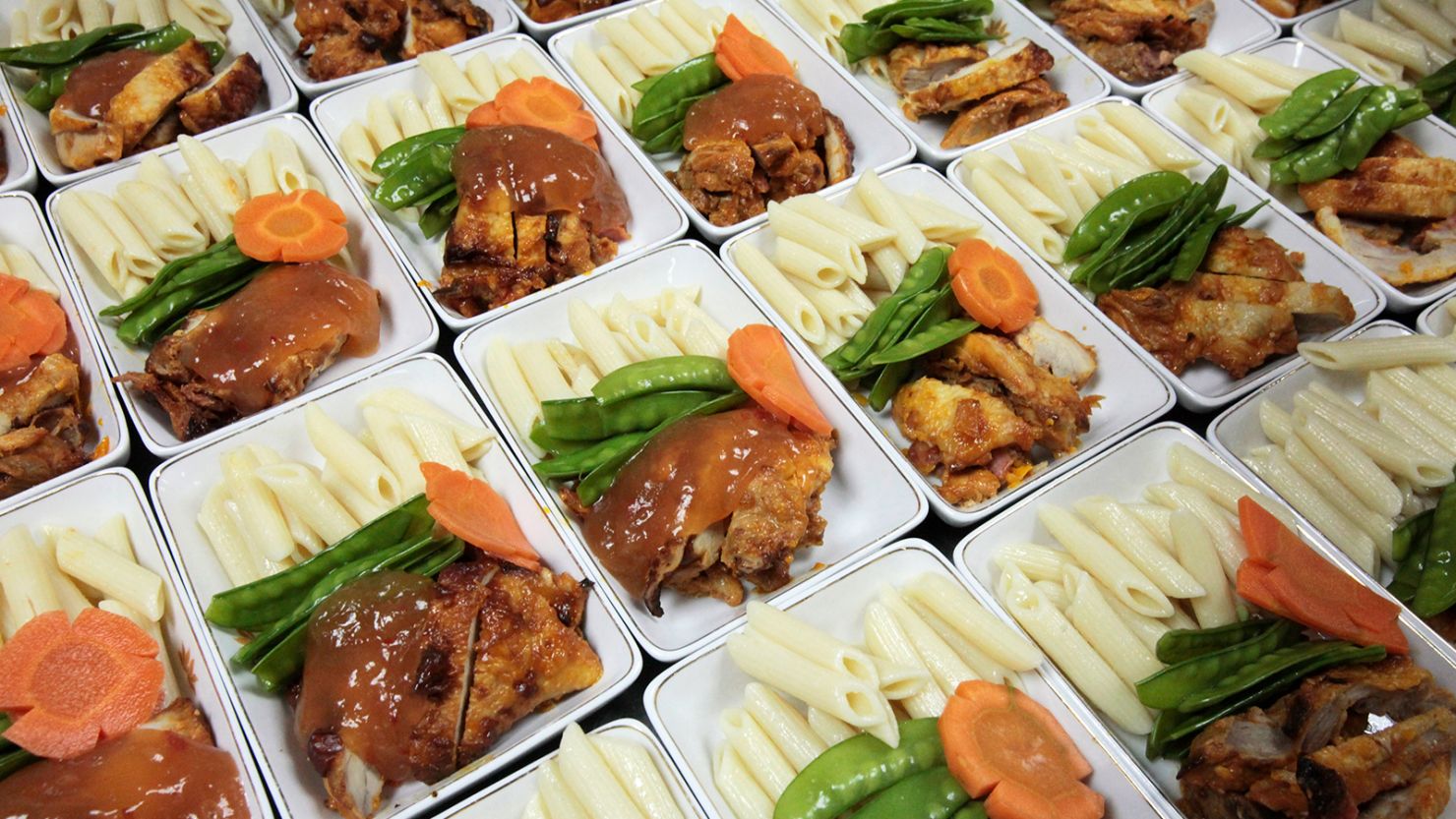“Mile-high slop.” “Breakfast abominations”. “Barely swallowable.” So read the write ups listed in the rundown of the worst plane meals in 2019 by UK consumer magazine Which?.
Sneering at the lows of cuisine served in the sky is a universal gag – one that evokes that standup comedy trope: “What’s the deal with airline food?”
Theories on its inferiority abound. Meals are churned out in industrial kitchens near the airport. They’re half-drowned in liquid (giving them a vague shot of retaining moisture) and half-frozen, before being zapped to imperfection 35,000 feet up. Spices and seasonings are used parsimoniously to appeal to easily offended palates. Cabin pressure depletes passengers’ sense of smell, and therefore enjoyment – so too does the roar of the jet engines.
All these theories hold water, too. But nearly two years into the Covid-19 pandemic – during which air travel has become a rare commodity – are we starting to appreciate what we had?
Have we, in fact, started to miss this much-maligned sky chow?
From cold fried chicken to beluga caviar
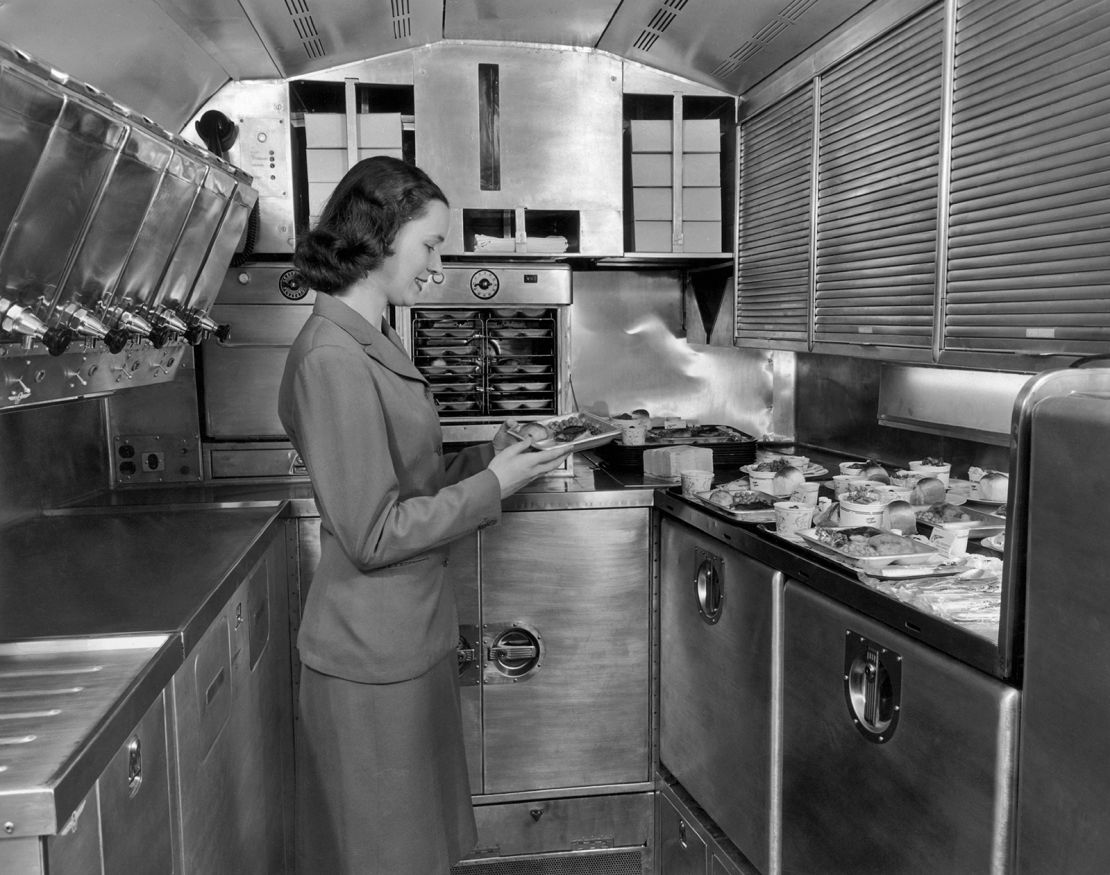
Dining in the clouds was once so uncomplicated. Richard Foss, culinary historian and author of “Food in the Air and Space: The Surprising History of Food and Drink in the Skies,” says that as commercial flight took off in the 1920s, passengers typically settled for sandwiches, salads, perhaps a piece of cold fried chicken.
“Aircraft did not have galleys,” explains Foss, “so the only thing that could be served was a picnic lunch at room temperature, with beverages from a Thermos.”
It was on airships, like the LZ 127 Graf Zeppelin, that the first gastronomic flying food arrived. A luncheon menu from 30 May 1930 casually offers beluga caviar on toast followed by braised beef with fresh vegetables and potatoes in cream – presented on finest china, naturally. (It was also one man’s job to limit the rise and dip of the airship’s bow, in case bottles of wine tipped over on the lounge tables.)
Such unfathomable extravagance soon made its way to other forms of floating transport; Pan Am’s “Clipper” flying boats roasted whole joints of beef midair, before dishing up to passengers in a private dining room.
So where, then, did it all go so wrong?
Butt of the joke
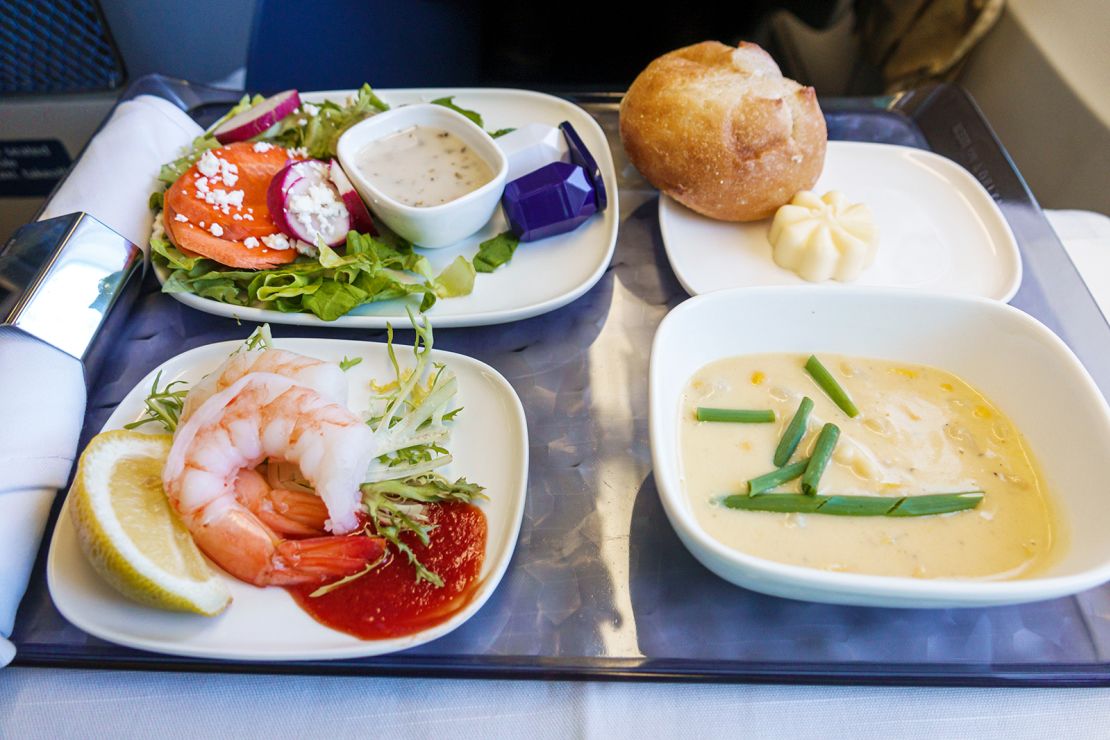
“If you see the ads… seven chefs slicing the beef wellington. Then when you get on a plane they give you a diseased piece of chicken… with the blackheads still in the pores!”
So goes a bit by comedian Alan King. In the 1950s, he became one of the first to observe the pitfalls of inflight cuisine. (King did so many jokes about airlines, it wasn’t unusual for him to be sued by them – something he’d then work into his next act.)
The irony is that when King first started with these wisecracks, airline food was still on a steep upward trajectory.
This was an era when Northwest Orient Airlines built a pseudo-Japanese cocktail lounge on their “Stratocruiser” aircraft, peppered it with bonsai trees and calligraphy, then passed round shrimp on sticks jutting out of fresh pineapples. Hardly slumming it.
Even aboard the famous Hindenburg airship in the 1930s – so extravagant its menu included Indian swallow nest soup followed by tenderloin steak with goose liver – many Americans apparently complained the cuisine was too creamy and rich.
Airline food has always had its detractors, and always will. That doesn’t mean it’s always stomach-churning mush that’s going to have you reaching for the barf bag.
The people who love airline food
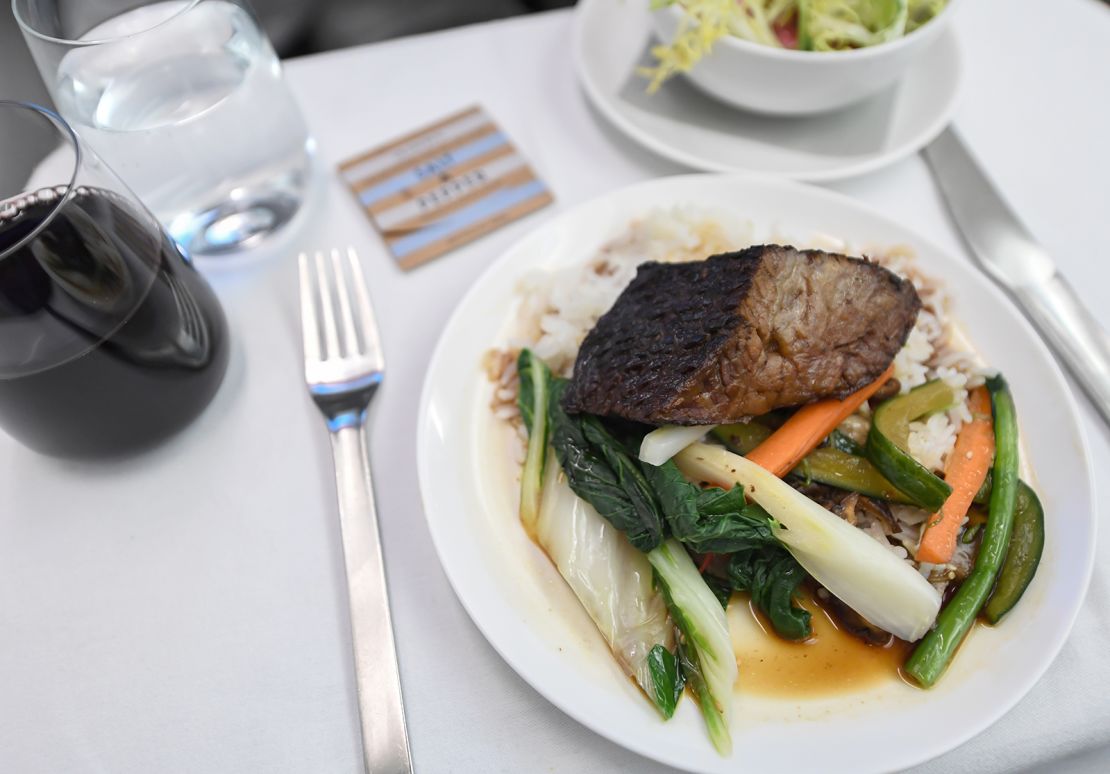
For many, sky-high cuisine is something to be savored. Frequent flier Nik Loukas is the creator of Inflight Feed, where he posts, tweets and Instagrams reviews and photos of his airbourne meals – so far covering more than 150 airlines.
His write ups may not be ebullient across the board (Loukas recalls with some disdain a “chicken burger swimming in sauce” from one particular Ukranian airline), but they’re often very positive.
Sky-high spreads objectively took a hit in the mid-1970s – when deregulation freed airlines to compete on price – but decent quality never fully disappeared. And you needn’t be in business class to discover something worth eating.
Loukas himself rates economy offerings from Delta (which revamped its economy service just before Covid hit), Turkish Airlines (“inspired drinks and desserts”) and Emirates (“tasty portions that are plentiful and include fresh salads and desserts”).
And the dishes themselves aren’t the whole story.
Says Loukas: “In economy class it’s always interesting to see what airlines offer… smaller details such as hot towel offerings, printed menus, bottled water make a small difference to the experience.”
He’s not alone in his appreciation. Just as you’ll find articles positing the perils of airplane food, there are plenty of others pointing you in the direction of the best – from Turkish Airlines’ mincemeat-stuffed eggplants to Qatar Airways’ mandarin cheesecake.
Maybe that’s why last year, as flights were grounded globally, some people carried on consuming airline food regardless.
Airline food, served terra firma
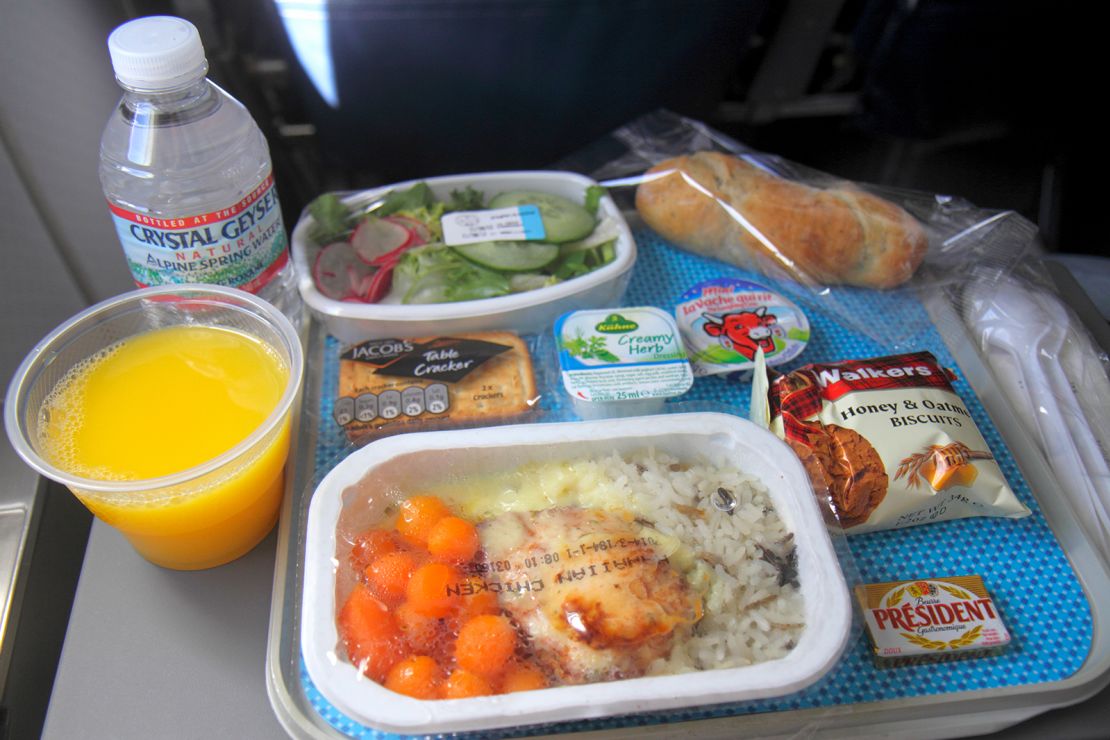
As the pandemic took hold and it became clear that most of us weren’t hopping on a Boeing anytime soon, airlines and their caterers were left lumbered with surplus supplies.
Some thought on their feet, selling off an excess of spinach-and-pastrami quiches, Dutch stroopwafels and cheese snack trays, to grounded customers.
Garuda Indonesia even threw in the plastic tray and cutlery – not exactly eco-friendly, but sure to create an authentic experience (particularly if you wedged yourself in between two housemates and watched three Disney movies in a row).
The Wall Street Journal branded those who took up the offer “stir-crazy.” “Nostalgic” might have been more appropriate; perhaps it was a similar nostalgia that prompted an online rush to snap up crockery, cutlery – and even hot towels – when British Airways announced it was selling off a load of its old inventory.
And while Garuda Indonesia et al’s efforts were reactive, the concept of airplane food served on terra firma is more lucrative than you might think.
It’s been reported that AirAsia’s Santan food brand is looking to expand from 15 stores in Malaysia, to a whopping 100 franchises worldwide. The plan is to sell essentially the same recipes currently dished out in the skies – including rendang, nasi goreng and nasi lemak curries.
Santan’s cuisine is of a certain caliber, of course – and it goes against that cardinal rule of “over-spicing” the sauce. But if it pulls off this venture, what’s to stop other airline caterers upping their game, branching out and following in Santan’s contrails?
Ordering in a Lufthansa
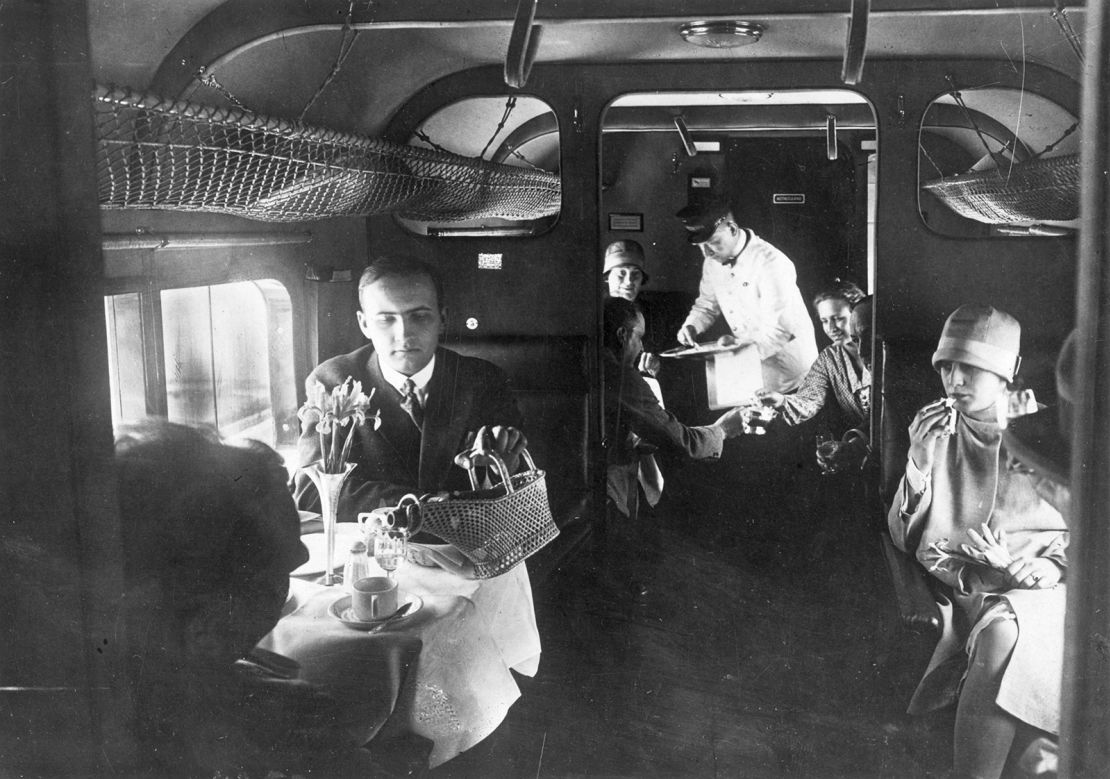
What’s airline food ever done for us? It’s a distraction from the tedium of a long flight; if your mind’s made up that you hate it, you can at least copy author David Barry, and use it as “a form of inflight entertainment, wherein the object is to guess what it is, starting with broad categories such as ‘mineral’ and ‘linoleum’.”
Really though, it’s often not that bad – so long as we don’t expect a jet-propelled version of the Ritz (even swish bills of fare concocted by Michelin-starred chefs like Gordon Ramsay and Daniel Boulud have their limitations once they’re above the clouds).
More than anything, plane food is the first taste of a new adventure. Whether you’re Lindbergh nibbling sandwiches en route to Paris; a mid-century Cathay Pacific passenger demolishing a flame-baked Alaska; or an unfortunate soul watching their burger go limp in its own juices – this is the gastronomic gateway to far better, more enthralling repasts that await once you’ve touched down.
As Covid and climate change threaten a type of travel that’s become second nature, some of us are now secretly (or not-so-secretly) craving the very same thing we turned our noses up at in the “before times.”
Depending on how things go, in 10 years, we could all be on our latest staycation, taking the family out for a slap up Emirates, or having a chilled one and ordering in a Lufthansa.
Top image credit: Photo by Chau Doan/LightRocket via Getty Images
Will Noble is editor of Londonist, a website all about London. The books Londonist Mapped and Londonist Drinks are available to buy now.
